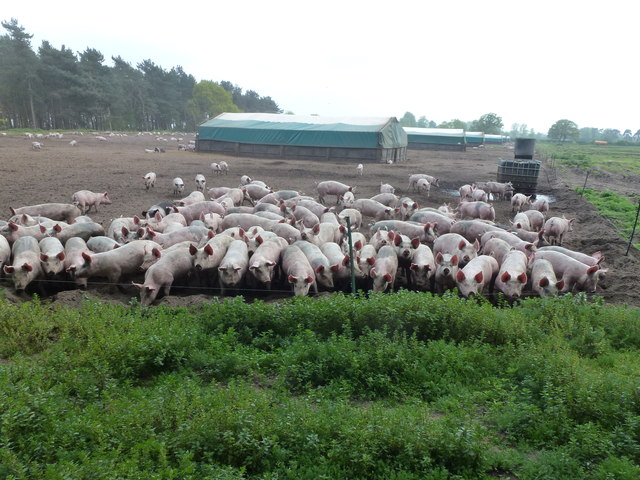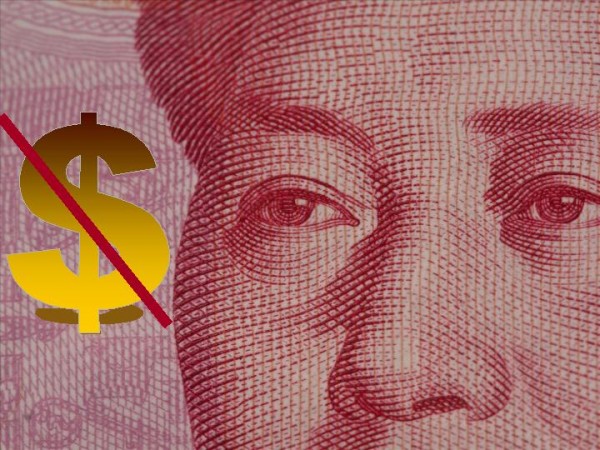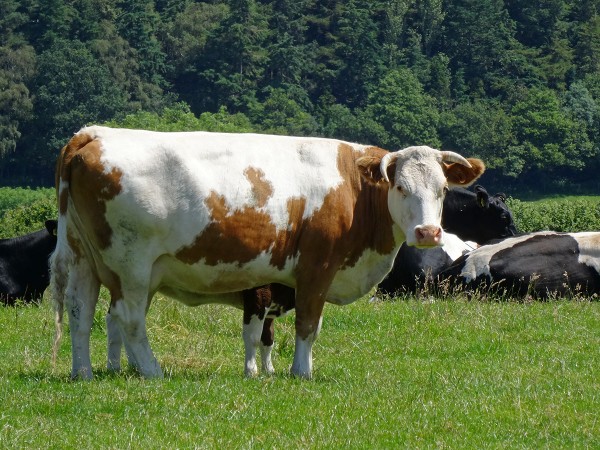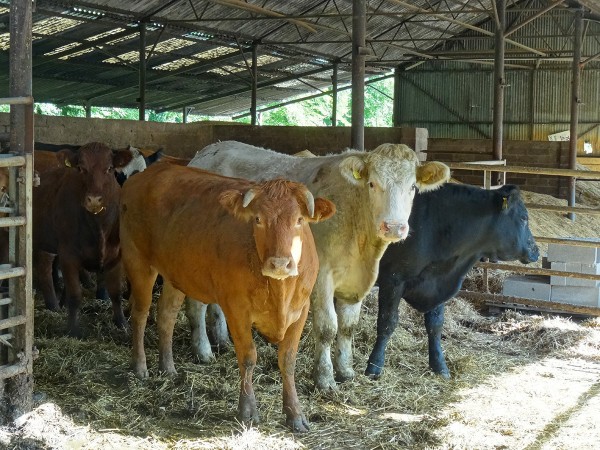 Pork – a favourite food of many Brits, whether it’s as a key ingredient of a roast dinner or a full English Breakfast! But, British pig farmers may be in for a tricky ride and we might be seeing foreign pork on our plates in the months to come. This is because of the falling price of pork, which may be driving local farmers out of the market.
Pork – a favourite food of many Brits, whether it’s as a key ingredient of a roast dinner or a full English Breakfast! But, British pig farmers may be in for a tricky ride and we might be seeing foreign pork on our plates in the months to come. This is because of the falling price of pork, which may be driving local farmers out of the market.
As we know, market prices are determined by the interaction of demand and supply and as market conditions change, this will affect the price at which pork sells at. This in turn will have an impact on the incomes of farmers and hence on farmers’ ability to survive in the market. According to forecasts from Defra, specialist pig farms are expected to see a fall in income by 46%, from £49,400 to £26,500 in 2016. A key driver of this, is the decline in the price of pork, which have fallen by an average of £10 per pig. This loss in income has led to pig farmers facing the largest declines of any type of farm, even beating the declines of dairy farmers, which have been well-documented.
If we think about the forces of demand and supply and how these have led to such declines in prices, we can turn to a few key things. Following the troubles in Russia and the Ukraine and Western sanctions being imposed on Russia, a retaliation of sorts was Russia banning European food imports. This therefore reduced demand for British pork. Adding to this decline in demand, there were further factors pushing down demand, following suggestions about the adverse impact that bacon and ham have on health. If pig farmers in the UK continue with the number of pigs they have and bearing in mind they would have invested in their pig farms before such bans and warnings were issued, then we see supply being maintained, demand falling and prices being pushed downwards.
Zoe Davies, Chief Executive of the National Pig Association said:
“This year is going to be horrendous for the British pig industry … Trading has been tough for at least 18 months now and we are starting to see people leave. We’re already seeing people calling in saying they’ve decided to give up. All we can hope is that more people leave European pig farms before ours do.”
We can also look to other factors that have been driving pig farmers out of business, including a strong pound, the glut of supply in Europe and productivity in the UK. Lily Hiscock, a commentator in this market said:
“It is estimated that the average pig producer is now in a loss-making position after 18 months of positive margins … The key factors behind the fall in markets are the exchange rate, UK productivity and retail demand … Indeed, pigmeat seems to be losing out to cheaper poultry meat in consumers’ shopping baskets … The recent fall in prices may stimulate additional demand, and a strengthening economy could help, but at present these are hopes rather than expectations.”
The future of British pig farms is hanging in the balance. If the economy grows, then demand may rise, offsetting the fall in demand being driven by other factors. We will also see how the exit of pig farmers affects prices, as each pig farmer drops out of the market, supply is being cut and prices rise. Though this is not good news for the farmers who go out of business, it may be an example of survival of the fittest. The following articles consider the market for pork.
Podcast
 UK pork market, Poppers, Scrap Metal BBC Radio 4, You and Yours (28/01/16)
UK pork market, Poppers, Scrap Metal BBC Radio 4, You and Yours (28/01/16)
Articles
Drop in global pork prices to bottom out – at 10-year lows agrimoney.com (29/01/16)
UK pork crisis looms as pig farmers expect income to half in 2016 Independent, Zlata Rodionova (5/02/16)
British pig farmers et for horrendous year as pork prices fall Western Morning News (17/01/16)
Questions
- What are they demand-side and supply-side factors which have pushed down the price of pork?
- Illustrate these effects using a demand and supply diagram.
- Into which market structure, would you place the pork industry?
- Using a diagram showing costs and revenues, explain why pig farmers in the UK are being forced out of the market.
- How has the strength of the pound affected pork prices in the UK?
 Economics, but not as we know it. As the introduction to this programme on BBC radio 4 suggests, there has been criticism and concern about the way in which we think about economics. About, how it’s taught; the lessons we learn and whether we need to have a re-think. Tomas Sedlacek is a Czech economist and has a different way of thinking about this subject.
Economics, but not as we know it. As the introduction to this programme on BBC radio 4 suggests, there has been criticism and concern about the way in which we think about economics. About, how it’s taught; the lessons we learn and whether we need to have a re-think. Tomas Sedlacek is a Czech economist and has a different way of thinking about this subject.
Humanomics is certainly a new way of thinking about economics and considering how it links and can be applied to a wide range of areas: the Bible; movies such as Fight Club and the Matrix. This 30 minute discussion between Evan Davies and Tomas Sedlacek provides some interesting insights and thoughts on some of the current challenges facing this subject and some novel insights into how we could change our thinking.
 Tomas Sedlacek: The Economics of Good and Evil BBC Radio 4 (25/01/16)
Tomas Sedlacek: The Economics of Good and Evil BBC Radio 4 (25/01/16)
Questions
- How do we define and measure value? Is this always possible? Can you think of some things where we cannot assign prices or numbers to values?
- How could economics be relevant Adam and Eve?
- Think about the marriage market. How would you apply the model of demand and supply to this most unusual of markets?
- What insights does Tomas Sedlacek provide about the ancient business cycle and this might affect our thinking about debt and assets?
- Do you think that refugees are of benefit to a country? If you don’t think they are of benefit, does this mean that countries should not accept them?
- If we did find out that corruption or crime and terrorism were of benefit to the GDP of a country, would you encourage it? Or would you place the morality issue above the actual figure of contribution?
 The Chinese economy was, for some time, the beacon of the world economy, posting strong growth and giving a much needed boost to demand in other countries. However, the weakening Chinese economy is now causing serious concerns around the world and not least in China itself.
The Chinese economy was, for some time, the beacon of the world economy, posting strong growth and giving a much needed boost to demand in other countries. However, the weakening Chinese economy is now causing serious concerns around the world and not least in China itself.
China’s stock market on Monday 11th January closed down 5.3%, with the Hong Kong Index down by 2.8%. These falls suggest a continuing downward trajectory this week, following the 10% decline on Chinese markets last week. Today, further falls were caused, at least in part, by uncertainty over the direction of the Chinese currency, the yuan. Volatility in the currency is expected to continue with ongoing depreciation pressures and adding to this is continuing concerns about deflation.
The barrage of bad news on key economic indicators may well mean significant intervention by Chinese authorities to try to avoid its slowest growth in 25 years. However, there are also concerns about China’s ability to manage its economic policy, given recent events. IG’s Angus Nicholson said:
“Global markets are still in the grips of China fears, and it is uncertain whether the Chinese government can do enough to reassure global investors.”
Similar sentiments were echoed by Paul Mackel, head of emerging markets FX research at HSBC:
“Different signals about foreign exchange policy have wrong-footed market participants and we are wary in believing that an immediate calmness will soon emerge.”
Perhaps key to turning this downward trend on its head, will be the Chinese consumers. With a traditionally larger saving ratio than  many Western economies, it may be that this ‘cushion’ will give growth a boost, through the contribution of consumer spending. As we know, aggregate demand comprises consumption, investment, government spending and net exports (AD = C + I + G + X – M). Consumer spending (C) increased from 50.2% in 2014 to 58.4% in 2015, according to HIS Global Insight. A similar increase for 2016 would certainly be welcome.
many Western economies, it may be that this ‘cushion’ will give growth a boost, through the contribution of consumer spending. As we know, aggregate demand comprises consumption, investment, government spending and net exports (AD = C + I + G + X – M). Consumer spending (C) increased from 50.2% in 2014 to 58.4% in 2015, according to HIS Global Insight. A similar increase for 2016 would certainly be welcome.
As oil prices continue to fall and concerns remain over China’s weak economic data, we may well soon begin to see just how interdependent the world has become. Many economists suggest that we are now closer to the start of the next recession than we are to the end of the last one and this latest turmoil on Chinese stock markets may do little to allay the fears that the world economy may once again be heading for a crash. The following articles consider the Chinese turmoil.
Free lunch: China’s weakest link Financial Times, Martin Sandbu (11/01/16)
China’s stocks start the week with sharp losses BBC News (11/01/16)
China shares fall 5% to hit-three-month low The Guardian (11/01/16)
China’s resilient shoppers face fresh test from market headwinds Bloomberg (11/01/16)
China shares head lower again on price data Sky News (11/01/16)
U.S., European shares slip as China, oil woes continue Reuters, Lewis Krauskopf (11/01/16)
U.S. stocks drop as oil tumbles again Wall Street Journal (11/01/16)
China escalates emergency stock market intervention The Telegraph, Mehreen Kahn (05/01/16)
Questions
- How are prices and values determined on the stock market?
- Share prices in China have been falling significantly since the start of 2016. Has it been caused by demand or supply-side factors? Use a demand and supply diagram to illustrate this.
- Why has the volatility of the Chinese currency added further downward pressure to Chinese stock markets?
- With the expected increase in consumer spending in China, how will this affect AD? Use a diagram to explain your answer and using this, outline what we might expect to happen to economic growth and unemployment in China.
- Why are there serious concerns about the weak level of inflation in China? Surely low prices are good for exports.
- Should the world economy be concerned if China’s economy does continue to slow?
- To what extent are oil prices an important factor in determining the future trajectory of the world economy?
 The housing market can be divided into two areas: owner-occupied and rental. Many news articles have focused on the problems in owner-occupation with house prices preventing first-time buyers from getting on the property ladder and forcing young people to move out of areas where they grew up. Second homes, foreign investors and a shortage of affordable housing have all added to the problems in this part of the housing market. But what about the rental market?
The housing market can be divided into two areas: owner-occupied and rental. Many news articles have focused on the problems in owner-occupation with house prices preventing first-time buyers from getting on the property ladder and forcing young people to move out of areas where they grew up. Second homes, foreign investors and a shortage of affordable housing have all added to the problems in this part of the housing market. But what about the rental market?
Many people have been forced to consider rental accommodation due to the affordability issues with owner-occupation. But, with more and more people demanding rental properties, affordability in this sector is also becoming a problem. Latest figures from Your Move and Reeds Rains suggest that rents have increased  by around 6.3% over the past year to an average of £816 per month. This has occurred, despite inflation being at very low levels.
by around 6.3% over the past year to an average of £816 per month. This has occurred, despite inflation being at very low levels.
The average increase in rents has varied across the UK, as is the case with average increases in house prices, but looking at the UK-wide data in both cases, house price growth appears to have been out-stripped by rental price growth. This spells trouble for the government which is already under pressure to address the housing shortage. Adrian Gill, Director of the two firms has said:
“Rents have been growing faster than ever – particularly in real terms, given inflation has essentially been zero since February. Across the country, towns and cities are seeing demand from local tenants outstrip the supply of properties to let, with inevitable effects on rents. There is little sign yet of this cooling substantially as the autumn progresses.”
So definitely bad news for those in rented accommodation, especially in places like London, where average rents are up 11.6%, and the East of England, where they have increased by 8.8%. However, this report will make for happier reading for landlords, who will not only see an increase in their rental income, but will also recognise that the value of the house itself has increased.
The following articles consider the housing market and in particular, the latest data on rental prices.
Average monthly rent hits record high of £816, highlighting housing shortage The Guardian, Rupert Jones (16/10/15)
Tenants ‘face 6.3% annual rent rise’ BBC News, Kevin Peachey (16/10/15)
London Skyscraper rents rise 11%, Hong Jong remains priciest Bloomberg, Neil Callanan (14/10/15)
Buy-to-let investors earn near 10% a year Introducer Today, Harvey Jones (16/10/15)
Rent rises slower in Scotland Herald Scotland, Jody Harrison (21/10/15)
Record rents as property shortage deepens Sky News (16/10/15)
Generation rent: the reluctant rise of the older tenant The Telegraph, Hannah Betts (3/10/15)
Questions
- Use a demand and supply diagram to explain the housing problem.
- If the main cause of the housing issue is house price rises, why has this affected the rental market so badly?
- What are the solutions to the housing problem? In each case, explain whether it is a demand- or supply-side solution.
- Why is the rate of consumer price inflation important when thinking about house price or rental price increases?
- Given the regional differences in house prices, does the government have a role to intervene here? How could governments affect regional variations in house prices?
 Most of us will have milk in our fridges – it’s a basic product consumed by the majority of people on a daily basis and hence a common feature of most shopping trolleys. As we saw in the post Got milk?, the low price of milk has been causing problems for farmers. This has caused one Morrisons store to take a different approach.
Most of us will have milk in our fridges – it’s a basic product consumed by the majority of people on a daily basis and hence a common feature of most shopping trolleys. As we saw in the post Got milk?, the low price of milk has been causing problems for farmers. This has caused one Morrisons store to take a different approach.
In the increasingly globalised world, British dairy farmers are no longer competing against each other. The global market place means that they are now facing growing competition from abroad and in this global world, supply exceeds demand. Even in the EU, the member states in 2015 are exceeding the milk production levels from 2014. In many markets, we wouldn’t be so concerned about production (or supply) rising, as demand can keep pace. However, in the market for milk, it’s not a product that you consume (that much) more of as your income rises. So, as the world gets richer, demand for milk is not increasing at the same pace as supply – demand in China has collapsed. This means that prices are being forced down. Adding to this global market place, we saw the European Union remove its quotas on milk production, thus boosting supply and Russian bans on imports.
The farmers themselves are in a tricky situation. They are often the small players in the supply chain, with prices being forced down by customers, supermarkets and milk processors. AHDB Dairy, the trade body, says that the average price of milk has decreased to just 23.66p per litre. According to leading industry experts this is well below the costs of production, suggested to be closer to 30p per litre. If these figures are even close to being accurate, then clearly dairy farmers’ costs of production per litre are no longer covered by the price they receive. Every litre of milk produced represents a loss.
The price that supermarkets pay to farmers for milk does vary, with some such as Marks and Spencer and Tesco ensuring that they pay farmers a price above cost. However, Morrisons in Bradford has adopted a new strategy and brand.  Their new milk brand ‘Morrisons Milk for Farmers’ has been launched at a 23p price rise for every four pint bottle. The catch: they will become the first UK retailer where the 23p price hike goes directly to farmers. This represents 10 pence per litre of milk going directly back to the farmers that produce it. This is a bold strategy, but data and surveys do suggest a willingness to pay more from customers, if it means that dairy farmers get a fairer deal. The protests we have seen across the country have certainly helped to generate interest and created awareness of the difficulties that many farmers are facing. Rob Harrison from the NFU said:
Their new milk brand ‘Morrisons Milk for Farmers’ has been launched at a 23p price rise for every four pint bottle. The catch: they will become the first UK retailer where the 23p price hike goes directly to farmers. This represents 10 pence per litre of milk going directly back to the farmers that produce it. This is a bold strategy, but data and surveys do suggest a willingness to pay more from customers, if it means that dairy farmers get a fairer deal. The protests we have seen across the country have certainly helped to generate interest and created awareness of the difficulties that many farmers are facing. Rob Harrison from the NFU said:
“We are pleased that Morrisons has acknowledged the desperate situation that many dairy farmers still find themselves in and recognise that retailers have a big role to play in, helping customers to support the UK dairy sector…
…Research from Mintel revealed over half of people who drink cows milk, would be prepared to pay more than £1 for a four-pint bottle of milk, as long as it is dairy farmers that benefit. This new initiative will enable them to do just that. The 10p a litre extra will go directly back into the dairy sector will make a difference on farm.”
The interesting thing will be to observe the impact on sales following this 23p price rise. We would normally expect customers to look for the cheaper substitutes, but evidence does suggest that British consumers are willing to pay the price premium if it means helping British farmers. A similar strategy adopted for British Cheddar Cheese proved fruitful and over the coming weeks, we will see if the average consumer is willing to pay directly the dairy farmers. The following articles consider this topic.
Morrisons milk for farmers brand goes nationwide at £1.12 for four pints The Grocer, Carina Perkins (12/10/15)
Morrisons to create new milk brand for farmers BBC News (11/10/15)
Milk price row: farming union leaders meet Morrisons bosses The Guardian, Graham Ruddick (11/10/15)
Morrisons to sell new ‘Milk for farmers’ brand to support British dairy producers Independent, Loulla-Mae Eleftheriou-Smith (11/8/15)
Government to give one-off milk payment for dairy farmers as Morrisons launches premium milk brand City A.M., Catherine Neilan (12/10/15)
New Morrisons milk brand pays farmers more The Yorkshire Post (12/10/15)
Questions
- Using demand and supply analysis, explain which factors have caused the price of milk to fall.
- When incomes rise, the demand for milk does not really change. What does this suggest about the income elasticity of demand for milk and the type of product that it is?
- If prices rise and sales also rise, does this suggest that British milk has an upward sloping demand curve?
- If we do see little effect on the demand for milk following Morrisons 23p price rise, what conclusion can we come to about the price elasticity of demand?
- Why do supermarkets and milk processors have the power to force down prices paid to dairy farmers?
- What type of market structure do you think dairy farmers compete in?
- If dairy farmers are unable to sell a litre of milk for a higher price than it costs to produce, is it a sensible strategy for them to remain in the market?
 Pork – a favourite food of many Brits, whether it’s as a key ingredient of a roast dinner or a full English Breakfast! But, British pig farmers may be in for a tricky ride and we might be seeing foreign pork on our plates in the months to come. This is because of the falling price of pork, which may be driving local farmers out of the market.
Pork – a favourite food of many Brits, whether it’s as a key ingredient of a roast dinner or a full English Breakfast! But, British pig farmers may be in for a tricky ride and we might be seeing foreign pork on our plates in the months to come. This is because of the falling price of pork, which may be driving local farmers out of the market. UK pork market, Poppers, Scrap Metal BBC Radio 4, You and Yours (28/01/16)
UK pork market, Poppers, Scrap Metal BBC Radio 4, You and Yours (28/01/16)





